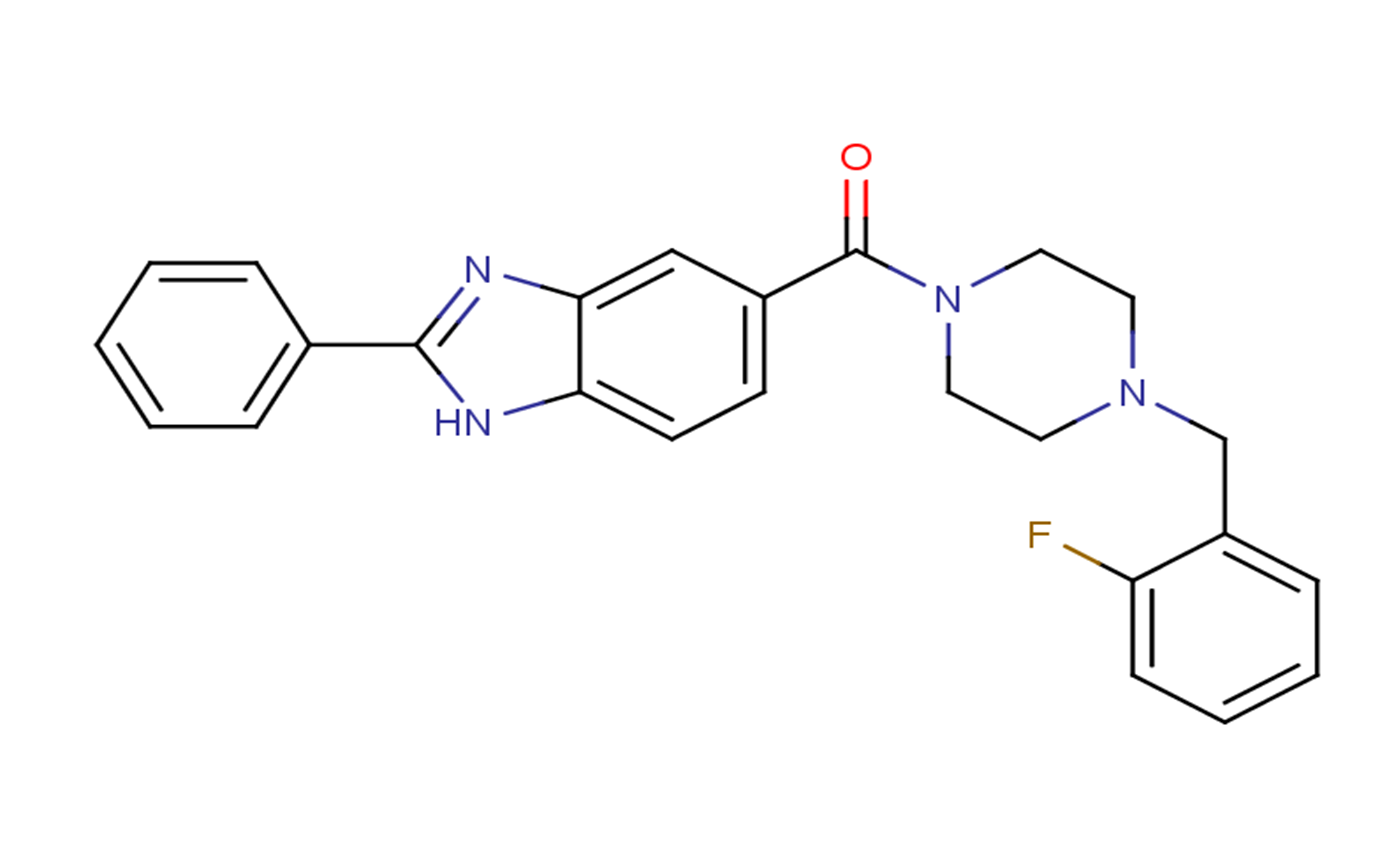
Bractoppin
CAS No. 2290527-07-8
Bractoppin ( —— )
产品货号. M24041 CAS No. 2290527-07-8
Bractoppin 是一种药物样抑制剂,可抑制人 BRCA1 串联 (t)BRCT 结构域的磷酸肽识别 (IC50 = 0.074 μM),在体外以纳摩尔浓度选择性抑制底物结合。
纯度: >98% (HPLC)
 COA
COA
 Datasheet
Datasheet
 HNMR
HNMR
 HPLC
HPLC
 MSDS
MSDS
 Handing Instructions
Handing Instructions
| 规格 | 价格/人民币 | 库存 | 数量 |
| 2MG | ¥632 | 有现货 |


|
| 5MG | ¥1021 | 有现货 |


|
| 10MG | ¥1677 | 有现货 |


|
| 25MG | ¥3629 | 有现货 |


|
| 50MG | ¥5330 | 有现货 |


|
| 100MG | ¥7598 | 有现货 |


|
| 200MG | 获取报价 | 有现货 |


|
| 500MG | 获取报价 | 有现货 |


|
| 1G | 获取报价 | 有现货 |


|
生物学信息
-
产品名称Bractoppin
-
注意事项本公司产品仅用于科研实验,不得用于人体或动物的临床与诊断
-
产品简述Bractoppin 是一种药物样抑制剂,可抑制人 BRCA1 串联 (t)BRCT 结构域的磷酸肽识别 (IC50 = 0.074 μM),在体外以纳摩尔浓度选择性抑制底物结合。
-
产品描述Bractoppin is a drug-like inhibitor of phosphopeptide recognition by the human BRCA1 tandem (t)BRCT domain (IC50 = 0.074 μM), which selectively inhibits substrate binding with nanomolar potency in vitro. Structure-activity exploration suggests that Bractoppin engages BRCA1 tBRCT residues recognizing pSer in the consensus motif, pSer-Pro-Thr-Phe, plus an abutting hydrophobic pocket that is distinct in structurally related BRCT domains, conferring selectivity.
-
体外实验——
-
体内实验——
-
同义词——
-
通路Others
-
靶点Other Targets
-
受体Others
-
研究领域——
-
适应症——
化学信息
-
CAS Number2290527-07-8
-
分子量414.47
-
分子式C25H23FN4O
-
纯度>98% (HPLC)
-
溶解度DMSO:10 mM
-
SMILESO=C(N1CCN(CC2=CC=CC=C2F)CC1)C3=CC=C4NC(C5=CC=CC=C5)=NC4=C3
-
化学全称——
运输与储存
-
储存条件(-20℃)
-
运输条件With Ice Pack
-
稳定性≥ 2 years
参考文献
1.Periasamy J , Kurdekar V , Jasti S , et al. Targeting Phosphopeptide Recognition by the Human BRCA1 Tandem BRCT Domain to Interrupt BRCA1-Dependent Signaling[J]. Cell Chemical Biology, 2018:S245194561830076X.
产品手册




关联产品
-
3-(Methylthio)propio...
3-甲硫基丙酸是蛋氨酸(尤其是 D-蛋氨酸)的代谢物之一。林肯链霉菌培养物积累的 3-甲基硫代丙烯酸的量与培养基中甲硫氨酸的浓度直接相关。该途径中的第一个中间体可能是酮酸,然后将其氧化脱羧成3-甲硫基丙酸。
-
FOY 251
FOY 251 是一种蛋白酶抑制剂,也是一种抗蛋白水解活性代谢物卡莫司特。FOY-251 是卡莫司他甲磺酸盐的活性代谢物,对小鼠皮质集合管细胞系(M-1 细胞)中的钠转运和小鼠血压有影响。
-
3-Hydroxykynurenine
3-Hydroxykynurenine 是一种色氨酸代谢物,是潜在的内源性神经毒素,在几种神经退行性疾病中表达水平都有升高的现象。3-Hydroxykynurenine 诱导神经细胞凋亡 (apoptosis)。



 021-51111890
021-51111890 购物车()
购物车()
 sales@molnova.cn
sales@molnova.cn







